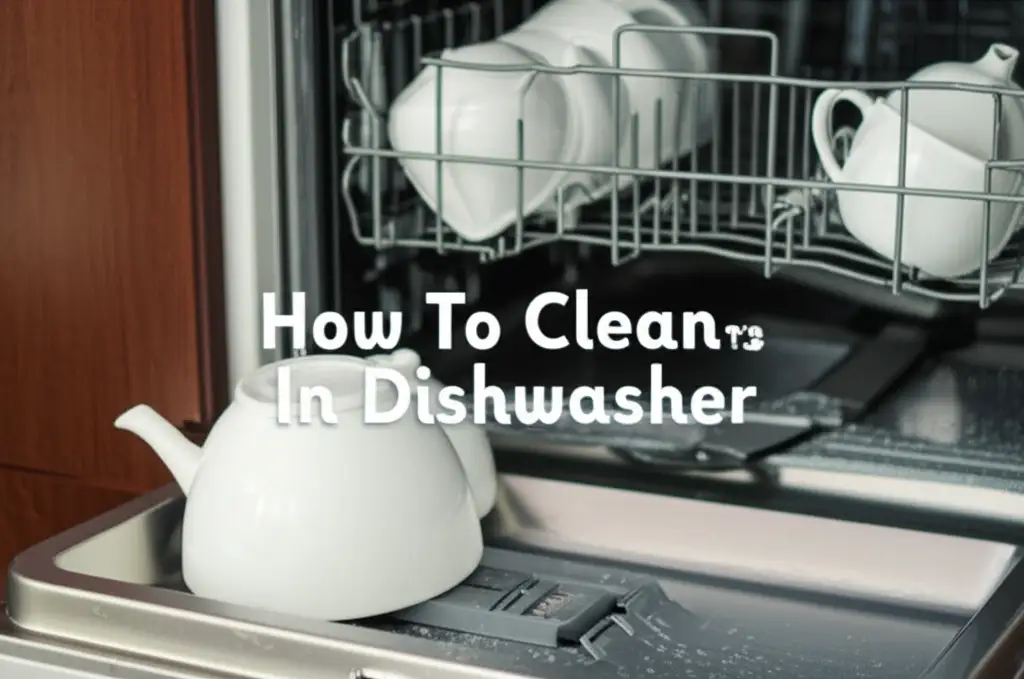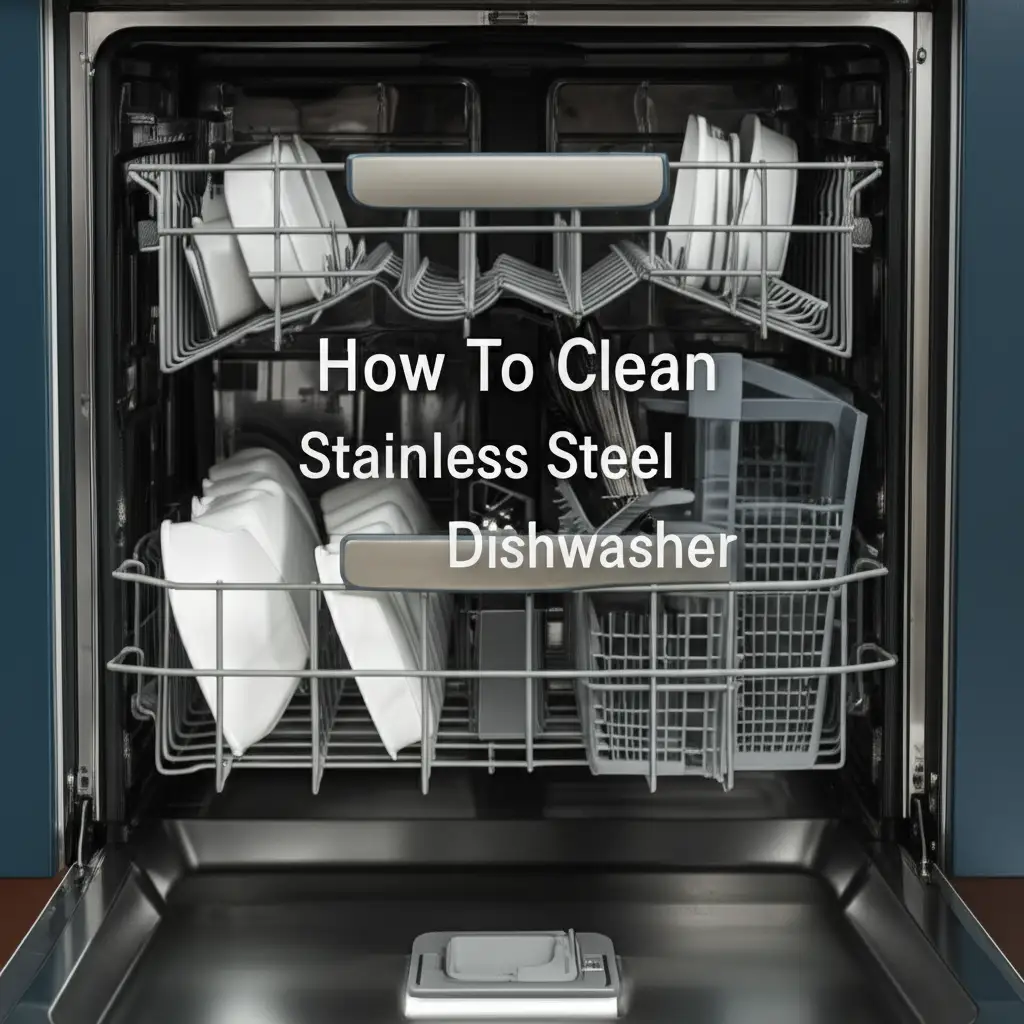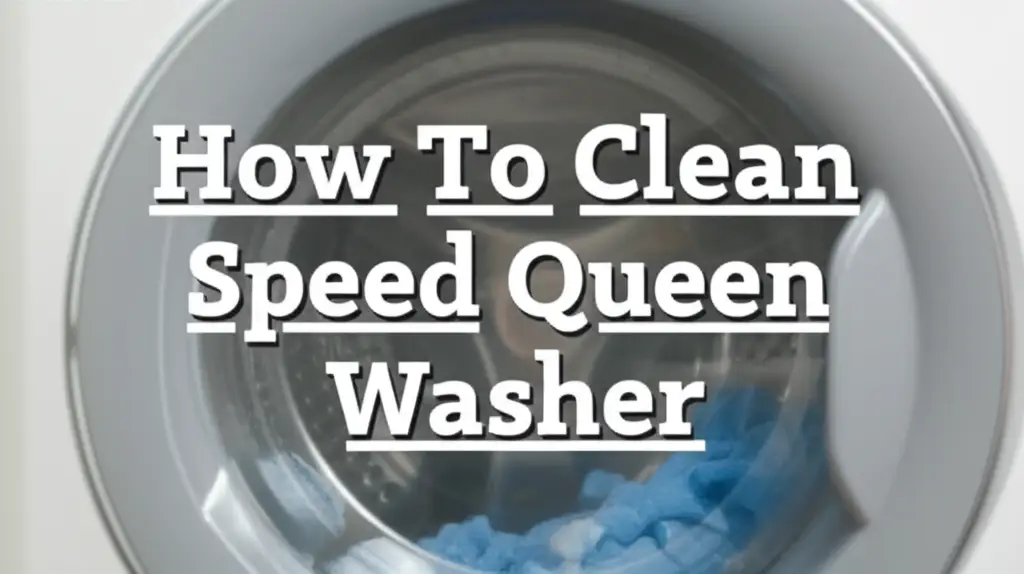· Appliance Care · 17 min read
How To Clean Filter In Dishwasher

Clean Your Dishwasher Filter for Peak Performance
Has your dishwasher stopped delivering that sparkling clean? Are you noticing food particles left on your dishes or a lingering odor every time you open the door? The culprit might be a dirty dishwasher filter. Cleaning this essential part of your appliance is a simple task. It dramatically improves your dishwasher’s performance and prevents bigger problems. I understand the frustration of pulling out dishes that are still dirty. Taking a few minutes to clean the filter can make a big difference. This guide helps you understand why and how to clean filter in dishwasher effectively. We will cover everything from identifying your filter type to mastering the cleaning process. Get ready to bring back the shine to your dishes and freshness to your kitchen.
Takeaway
- Locate and Remove: Find your dishwasher filter, usually at the bottom. Twist or unclip it to remove.
- Rinse Thoroughly: Use warm running water to flush out loose food particles.
- Scrub with Soap: Gently scrub with dish soap and a soft brush to remove stuck-on grime.
- Rinse and Reinstall: Ensure all soap is gone, then place the clean filter back securely.
- Regular Cleaning: Clean your dishwasher filter every 1-3 months for best results.
A Simple Answer to a Common Problem
You clean a dishwasher filter by first removing it from the base of the appliance. Then, rinse it thoroughly under warm running water to clear loose food debris. Use a soft brush and dish soap to scrub away any stuck-on grease or particles. Finally, rinse it well and return it to its place.
Understanding Your Dishwasher Filter and Its Purpose
Every modern dishwasher has a filter system. This system stops food particles from recirculating onto your dishes. Think of it as your dishwasher’s internal waste management system. Without a working filter, your dishes would come out dirtier than when they went in. It protects the pump and other internal parts from damage.
There are two main types of dishwasher filters. The first is a self-cleaning filter. These models usually have a built-in grinder that pulverizes food scraps. These systems are louder during operation. They require less manual cleaning but still benefit from occasional checks. The second type is a manual filter. This type is common in quieter dishwashers. It collects food particles in a mesh screen. You must regularly remove and clean this manual filter. My own dishwasher has a manual filter, and I clean it every few weeks.
Understanding your filter type helps you prepare for cleaning. Most dishwashers today use a manual filter that you access easily. It sits at the bottom of the wash tub. This filter often consists of two parts: a coarse filter and a micro-filter. The coarse filter catches larger debris. The micro-filter traps smaller bits. Both parts need attention during cleaning. Knowing what your filter does makes the cleaning process seem less like a chore and more like essential maintenance. It makes sense to keep this part clear for optimal performance.
A clean filter ensures water sprays correctly. It also prevents clogs in other parts of the system. Without a clear path, water flow suffers. This can lead to inefficient washing cycles. Dirty water might redeposit grime onto your dishes. This defeats the purpose of running the dishwasher at all. Properly maintaining this filter saves you time and effort in the long run. It helps avoid costly repairs down the line. I always feel better knowing my appliance works as it should.
Recognizing the Signs: When Your Dishwasher Filter Needs Cleaning
Your dishwasher gives you clear signs when its filter needs attention. The most common sign is dirty dishes after a wash cycle. You might find food particles, grit, or a cloudy film on plates and glasses. This happens because the filter cannot trap debris effectively. Instead, the debris gets redeposited.
Another obvious sign is a foul odor coming from the dishwasher. Food trapped in the filter will decompose. This creates unpleasant smells. These smells can transfer to your dishes. A stinky dishwasher is never a good sign. It often points directly to a clogged filter. I once noticed a weird smell, and sure enough, the filter was the culprit.
Poor drainage is also a strong indicator. If water stands at the bottom of your dishwasher after a cycle, the filter might be too clogged to let water pass through efficiently. The filter prevents larger items from entering the drain pump. When it is full, it slows down or stops drainage entirely. This can lead to stagnant water. Stagnant water encourages mold growth. If you have ever wondered how to clean mold in dishwasher, a dirty filter is a common starting point for mold issues.
Unusual noises during operation can also signal a dirty filter. When the filter is heavily clogged, the dishwasher’s pump might strain. It works harder to push water through. This creates humming, grinding, or whirring sounds. These noises are not normal. They indicate that your appliance is under stress. Pay attention to these sounds. They are your dishwasher asking for help.
Finally, long wash cycles can mean a dirty filter. If your dishwasher takes longer than usual to complete a cycle, the system is struggling. The filter blockage slows down water circulation. This forces the dishwasher to extend wash times to try and get dishes clean. If you notice any of these signs, it is time to check and clean your filter.
Before You Begin: Essential Tools for Filter Cleaning
Gathering your tools before you start makes the cleaning process smooth. You likely have most items already in your home. This simple preparation prevents interruptions during the task. I always make sure I have everything ready. This helps me get the job done quickly.
First, you will need rubber gloves. This protects your hands from food debris and grime. Dishwasher filters can be surprisingly gross. You might encounter bits of food, grease, and other unpleasant residues. Gloves keep your hands clean and hygienic. They are a must-have for this job.
Next, you will need a soft-bristled brush. An old toothbrush works perfectly for this. A small scrub brush also works. You need something that can get into small crevices. It should be gentle enough not to damage the filter mesh. This brush will help dislodge stubborn food particles. I keep an old toothbrush specifically for cleaning tasks like this.
You also need dish soap. Any standard liquid dish soap will work. It helps break down grease and food residue. A small amount goes a long way. This soap aids in a thorough cleaning. It leaves your filter smelling fresh.
A towel or paper towels are also useful. You can use them to wipe up any spills. They also help dry the filter before reinstallation. Having them nearby keeps your workspace tidy. This also ensures no water drips onto your floor.
Finally, a trash can should be close by. You will have plenty of food debris to discard. Dispose of it properly. Do not let it go down your sink drain. This prevents clogging your plumbing. Always put debris directly into the trash. With these simple items, you are ready to tackle your dirty dishwasher filter.
Step-by-Step Guide: Safely Removing Your Dishwasher Filter
Removing your dishwasher filter is easier than you think. Most filters are designed for user-friendly access. You do not need special tools for removal. Always begin by unplugging your dishwasher. Safety comes first when working with any appliance. This prevents accidental starts.
Open your dishwasher door completely. Look at the bottom of the dishwasher tub. You will see the filter assembly there. It is usually a round or cylindrical part in the center or rear of the tub. Sometimes it is hidden under the lower spray arm.
Many filters have a handle or a tab. You often twist this counter-clockwise to unlock the filter. Some models require you to push down and then twist. Other models might have clips that you unlatch. Consult your dishwasher’s user manual if you are unsure. The manual provides specific instructions for your model. I always check my manual first if I am unsure about an appliance.
Once unlocked, gently lift the filter out of its housing. Most manual filters come out in two parts. There is usually a larger, coarse filter and a finer, cylindrical micro-filter. They might come out together or separately. Be careful not to drop any detached food particles back into the dishwasher.
Some dishwashers might require you to remove the lower spray arm first. This usually involves unscrewing a cap or pulling it straight up. If your filter is under the spray arm, remove the arm. Then, you can access the filter. Remember how the parts fit together. This helps during reinstallation. Removing the filter safely is the first big step. You are now ready to clean it thoroughly.
Effective Cleaning Methods for Your Dishwasher Filter
Once you remove the filter, it is time to clean it. This step is crucial for sparkling dishes. There are several effective ways to clean the filter. I often combine a few methods for the best results.
First, rinse the filter under warm running water. Use your kitchen faucet. Let the water run through the mesh. This will wash away most of the loose food particles. You will be surprised how much gunk comes off. Make sure water flows through all openings.
Next, apply a small amount of dish soap to the filter. Take your soft-bristled brush. Gently scrub all surfaces of the filter. Pay close attention to the mesh screens and any crevices. This helps break down grease and sticky food residues. Scrub both the coarse filter and the micro-filter parts. Ensure no food particles remain trapped in the mesh. This is where most of the cleaning work happens.
For stubborn grime or mineral deposits, a vinegar soak can work wonders. After scrubbing with soap, you can soak the filter. Fill a small basin with warm water and about a cup of white vinegar. Let the filter soak for 15-30 minutes. Vinegar is great for dissolving hard water stains and mineral buildup. This can also help with lingering odors. If you are interested in general how to clean dishwasher with vinegar, this same principle applies.
You might encounter situations where black stuff builds up. This often happens from food residues or mold. If you see how to clean black stuff in dishwasher, the filter is a common spot. A good scrub with soap and a vinegar soak helps. For very persistent black spots, you might need a dedicated cleaner.
After soaking, rinse the filter thoroughly again. Make sure all soap residue is gone. Hold it up to the light to inspect it. Ensure there are no visible food particles or film left. A clean filter looks almost new. It feels smooth and free of sticky residue. This complete cleaning ensures your dishwasher runs its best.
Addressing Stubborn Buildup: Dealing with Food and Grease
Sometimes, just rinsing and scrubbing is not enough. Your dishwasher filter can accumulate stubborn layers of food and grease. This is especially true if cleaning has been neglected for a while. These tough buildups require more specific attention. My family cooks a lot, so I often deal with greasy residue.
One common issue is hardened food scraps. If food sits in the filter for too long, it can dry and stick like glue. For this, a good soak is your best friend. Submerge the filter in a solution of hot water and dish soap. Let it sit for at least 30 minutes, or even a few hours. The hot water softens the debris. The soap helps break down grease. After soaking, try scrubbing again. The softened gunk should come off much easier.
Grease buildup is another persistent problem. Dishwasher filters catch a lot of grease from plates and pans. If your dishes often have a greasy film, your filter might be overloaded. For heavy grease, add a degreasing dish soap to your soak water. You can also try a paste of baking soda and a little water directly on the greasy spots. Let it sit for 10-15 minutes. Baking soda is abrasive enough to help lift grime without scratching. Then, scrub with your brush. For an even more powerful cleaning, consider a mix of vinegar and baking soda for your dishwasher. This combination creates a fizzing action that helps loosen tough deposits.
Calcium buildup from hard water can also clog your filter. This appears as white, chalky residue. If your area has hard water, your dishwasher likely suffers from this. For calcium, white vinegar is incredibly effective. Soak the filter in undiluted white vinegar for an hour or more. You can also use citric acid. This natural acid also dissolves mineral deposits. You can learn more about how to clean calcium buildup in dishwasher for a comprehensive solution. A lemon juice soak can work in a pinch if you have no vinegar.
After tackling stubborn buildup, always rinse the filter thoroughly. Ensure no cleaning solution remains. Any residue could affect your next wash cycle. A clean filter allows water to flow freely. This prevents re-depositing the very gunk you are trying to remove. Addressing these tough spots means your dishwasher will truly perform its best.
Proper Reinstallation: Ensuring Your Dishwasher Works Best
Reinstalling the dishwasher filter correctly is as important as cleaning it. A loosely fitted or incorrectly placed filter will not do its job. It can lead to poor wash results or even damage to the dishwasher. I always take a moment to double-check.
First, ensure the filter is completely dry. You can wipe it with a clean towel. Or, you can let it air dry for a few minutes. A dry filter prevents introducing extra moisture into the filter housing. This reduces chances of mold or mildew growth in the future.
Next, carefully place the filter back into its designated spot at the bottom of the dishwasher tub. If your filter came out in two parts, put the finer micro-filter in first. Then, insert the coarser filter on top of it. Ensure they align properly. The parts are often designed to fit only one way. Do not force them into place.
Once the filter is in position, twist it clockwise to lock it. You should feel it click into place or become secure. Some models might require you to push down and then twist. If your filter uses clips, make sure they latch securely. The goal is a snug fit. A loose filter can vibrate during operation. It may even come undone during a wash cycle.
If you removed the lower spray arm, reattach it now. Make sure it spins freely. A stuck spray arm means uneven water distribution. This affects cleaning performance. Ensure any caps or screws are tightened.
After reinstallation, it is a good idea to run a short empty cycle. Use a dishwasher cleaning tablet or a cup of white vinegar. This helps flush out any tiny residual particles. It also helps clean the rest of the dishwasher interior. This also helps you check that the filter is properly seated and not causing any leaks. For a thorough clean, consider how to clean dishwasher with citric acid in an empty cycle. A properly installed filter ensures your dishes come out spotless every time. It keeps your dishwasher running smoothly for years.
Regular Maintenance: Keeping Your Dishwasher Filter Clean for Good
Cleaning your dishwasher filter is not a one-time event. Regular maintenance is key to keeping your appliance performing well. It also extends its lifespan. I have found that a consistent schedule prevents major buildup.
How often should you clean your filter? This depends on how often you use your dishwasher and what you wash. For average use (3-5 times a week), aim to clean the filter every 1-3 months. If you often wash heavily soiled dishes or use your dishwasher daily, consider cleaning it monthly. If you pre-rinse your dishes thoroughly, you might get away with less frequent cleaning. However, it is always a good idea to check it regularly. Just a quick glance can tell you a lot.
Make filter cleaning a part of your regular kitchen cleaning routine. You could set a reminder on your phone. Or, link it to another regular chore, like cleaning your kitchen sink. This helps create a habit. A consistent schedule prevents the signs of a dirty filter from appearing. You avoid the smells, the dirty dishes, and the strange noises.
Beyond the filter, consider other dishwasher maintenance. Periodically clean the spray arms. These can get clogged with mineral deposits or small food bits. Running a hot wash cycle with a dishwasher cleaner helps. You can use a specific cleaner or a home remedy. For example, how to clean dishwasher heating element is important for heating efficiency.
Scrape food off dishes before loading them. This simple act reduces the amount of debris entering your dishwasher. This lessens the burden on your filter. It means less frequent cleaning for you. Avoid putting large food scraps into the dishwasher. These are the main culprits for filter clogs.
By making filter cleaning a routine task, you ensure your dishwasher runs efficiently. You also prevent potential breakdowns. It is a small investment of time that pays off in sparkling dishes and a longer-lasting appliance. This kind of care keeps your home running smoothly.
FAQ Section
How often should I clean my dishwasher filter?
You should clean your dishwasher filter every 1 to 3 months for average use. If you use your dishwasher daily or wash heavily soiled dishes, clean it monthly. Checking the filter regularly is wise. This prevents major buildup. A quick visual check tells you if it needs attention.
What happens if I don’t clean my dishwasher filter?
If you do not clean your dishwasher filter, food particles and grease will accumulate. This causes dirty dishes after a wash cycle. You might also notice foul odors from decomposing food. The dishwasher may make unusual noises or drain slowly. This can eventually lead to appliance damage.
Can I put my dishwasher filter in the washing machine?
No, do not put your dishwasher filter in the washing machine. Washing machines are too harsh and can damage the delicate mesh of the filter. Always clean your dishwasher filter by hand. Use warm water, dish soap, and a soft brush. This ensures proper cleaning without damage.
My dishwasher still smells after cleaning the filter, what’s next?
If your dishwasher still smells after cleaning the filter, the odor might come from other areas. Check for food debris in the spray arms or around the door gasket. Run an empty hot cycle with a dishwasher cleaner. You can also use white vinegar or baking soda. These help eliminate odors from the entire appliance.
How do I know what type of filter my dishwasher has?
Most modern dishwashers have a manual filter. It is usually a removable cylinder or disc at the bottom of the tub. If your dishwasher is very quiet, it likely has a manual filter. If it is noisy during the wash cycle, it might have a self-cleaning filter. Check your dishwasher’s user manual for exact details.
Conclusion
Cleaning your dishwasher filter is a straightforward task. It dramatically improves your appliance’s performance. You can prevent dirty dishes, unpleasant odors, and potential mechanical issues. I hope this guide helps you feel confident in maintaining your dishwasher. This simple act keeps your dishes spotless.
Remember the key steps: safely remove the filter, clean it thoroughly with soap and water, tackle any stubborn buildup, and reinstall it correctly. Making filter cleaning a routine part of your home maintenance saves you time and money in the long run. A clean dishwasher means a cleaner kitchen and happier mealtimes. Take these steps today. You will enjoy the benefits of a well-maintained appliance. Your dishwasher works hard for you. Give it the small care it needs to continue performing at its best.
- dishwasher filter cleaning
- appliance maintenance
- kitchen cleaning tips
- dishwasher care
- home cleaning hacks
- dirty dishwasher solutions
- spotless dishes




